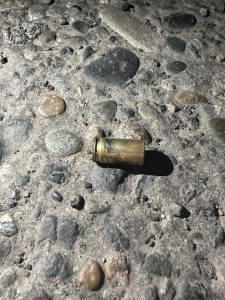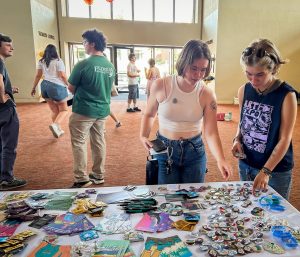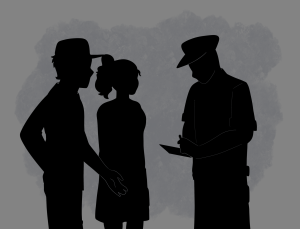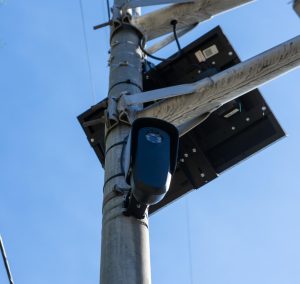Missing the Sun: Change of Season Affects Student Health and Well-being
December 3, 2015
As the semester nears its end, the general health of the Whitman campus is nearing its low-point for the year. Factors such as stress, season, and both weather and sleep patterns are all reaching their peak effect upon students. According to Claudia Ness, the Director of the Health Center, both physical and mental illness on the Whitman campus peak in the two weeks before winter break. Some of the main contributors of this peak are the stress of finals, the cumulative time spent in close quarters with other students, and the onset of winter.
One malady which is particularly linked to the colder season is Seasonal Affective Disorder (SAD). According to the Mayo Clinic, SAD is a type of depression which is related to changes in the season and weather. For most people affected by this disorder, the onset occurs in early winter and the effects are felt until the arrival of spring. The Counseling Center Village, a resource used by the Whitman Counseling Center, describes the symptoms of SAD as depression, lack of interest and energy, increased weight, and craving for carbohydrates, as well as slumps in concentration and social withdrawal.
Ness said that mid-October through to winter break is the worst for SAD. This is because college students are particularly susceptible to this type of depression, and, during this period of time, the causes of SAD are particularly pronounced.
Students already spend a good deal of time indoors due to academics, and the onset of winter drives their time spent outdoors far below a healthy level. Additionally, the depression and other symptoms of SAD are often dismissed as stress over finals or as “burning out” as the semester draws to an end, preventing students from seeking treatment. The Counseling Center Director, Thacher Carter, said that the counseling center at Whitman is well equipped to treat SAD, as is the Health Center.
Carter said that they typically recommend treatment that focuses on self-care and is sometimes augmented by medication and light therapy. Light therapy is a treatment for the lack of natural sunlight, in which students can sit beneath powerful light bulbs which simulate the sun and provide some vitamin D.
“During the start of second semester freshman year, I was feeling really depressed and down. I went to the counseling center, and my counselor suggested that I try out the light because I was from a warmer and sunnier climate,” Linnaea Weld said in an email.
Students are encouraged to use the lights if they think it might help them. Ness said that neither diagnosis, recommendation, nor appointment are necessary for students to use the lights.
“After a couple weeks I started feeling a lot less down, so I thought the light did help my mental health,” Weld said.
Carter mainly recommends that students practice self-care through “diet, exercise, and sleep, along with getting outside more in the late fall and winter months to get more full spectrum light and Vitamin D.” These recommendations are echoed by Ness, concerning student health as a whole.
Illnesses such as viruses and the flu are also reaching their annual highs at Whitman, and Ness encourages personal vigilance in order to keep oneself healthy. She believes that living at college changes the way people must handle illness.
“I think [this time of year] does put students at a higher risk [of mental and physical illness] than if they were home in more of a family situation where they grew up because most homes don’t have 125 or 150 people going through the same work and living spaces,” Ness said. “It just means that the students during this portion of their lives probably need to be a bit more concerned, even more than the average person, with the hand-hygiene and covering your mouth and protecting yourself.”
In order to protect oneself against illness, Ness recommends that students “never touch a doorknob or anything if [they] don’t have to. Use an elbow to push it open, cover up [their] hand with a sweater or jacket or something, because doorknobs and door latches and those things – think of hundreds of hands that go through the busy residence halls, or Reid, or busy academic buildings.” Little things go a long way to maintain a healthy campus, which is the goal of all staff in both the Health Center and the Counseling Center.
The Health Center and the Counseling Center collaborate frequently. There is a committee whose purpose is to plan out the campus-wide responses to illness and mental stress every year. According to Ness, this committee includes representatives from the Health Center, the Counseling Center, the Dean of Students Office, the Administration, and the medical advisors to the Health Center. Resident Assistants and Resident Directors are also asked for input when this committee devises its plan for dealing with illness. Ordinarily, the work of this committee may go unnoticed, but most of its work involves student-led, student-run, student-developed educational campaigns which focus on self-care. One of the products of this collaborative committee is the hand-sanitizer strategically placed around campus.
While Seasonal Affective Disorder is perhaps the malady with the most negative effect on quality of life for students, other more minor ailments contribute to student well-being (or lack thereof) as well. The weeks between the Thanksgiving and Winter breaks contain a perfect storm for illness. As stress levels rise due to imminent finals, students spend more time working indoors and less time outdoors. These both decreases their physical fitness and makes them more prone to SAD. Unfortunately, this cycle perpetuates itself, as the best cure for stress, according to Ness, is to “get some fresh air, some activity, some exercise … good food and nutrition, get the adequate amount of sleep.”
In order to avoid this veritable cornucopia of seasonal maladies, students must take care of themselves, physically, mentally, and emotionally. Carter expressed optimism about the coming winter, saying “The trend [in SAD] is downward. I believe that people are more aware and take better care of themselves through diet, exercise and sleep along with getting outside.”
The theme of student awareness is repeated again and again. Ness emphasized that stress and illness are “so individual because everybody deals with stress on their own.” Simply by being aware of one’s own physical and mental state students can prevent most health issues. They are encouraged to seek counseling to deal with stress and depression and to use the therapy lights as frequently as they wish to.
The other important message both Ness and Carter emphasized was getting outdoors. From maintaining the immune system to reducing stress to re-energizing the brain, time spend outside was recommended as the first line of defense for ailments of both they physical and mental variety. With the dropping temperature and darker skies, this may seem unpleasant, yet Ness claims that even “ten minutes or so to get blood pumping” is incredibly beneficial. The mental break and physical benefits of time spent outside are worth braving the winter weather and are necessary to maintain the health of the whole Whitman community.






